Will L.A. schools pass the salt and toss the whole wheat with relaxed Trump standards?
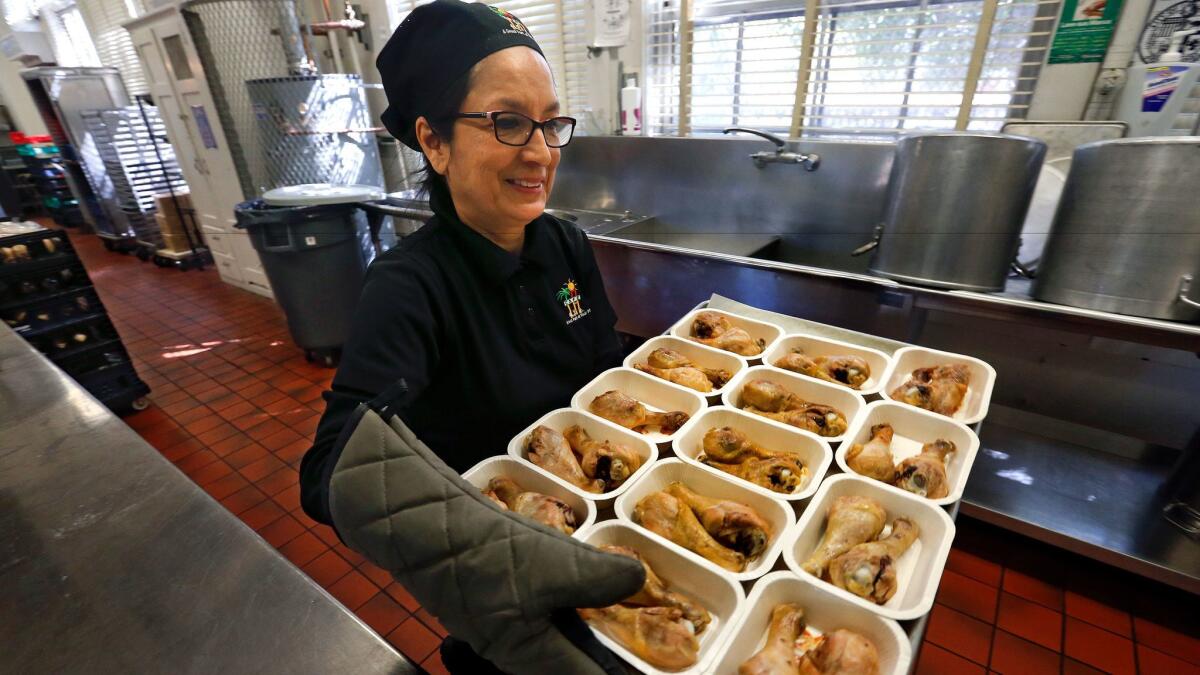
- Share via
Agriculture Secretary Sonny Perdue announced this week that his department would back away from enforcing the latest sodium-reduction target for school meals. In addition, schools won’t have to switch entirely to whole-wheat products, and they’ll be able to use flavored milk with 1% fat. (Previously, only nonfat flavored milk was allowed.) These standards were put in place by the Obama administration and have been gradually taking effect.
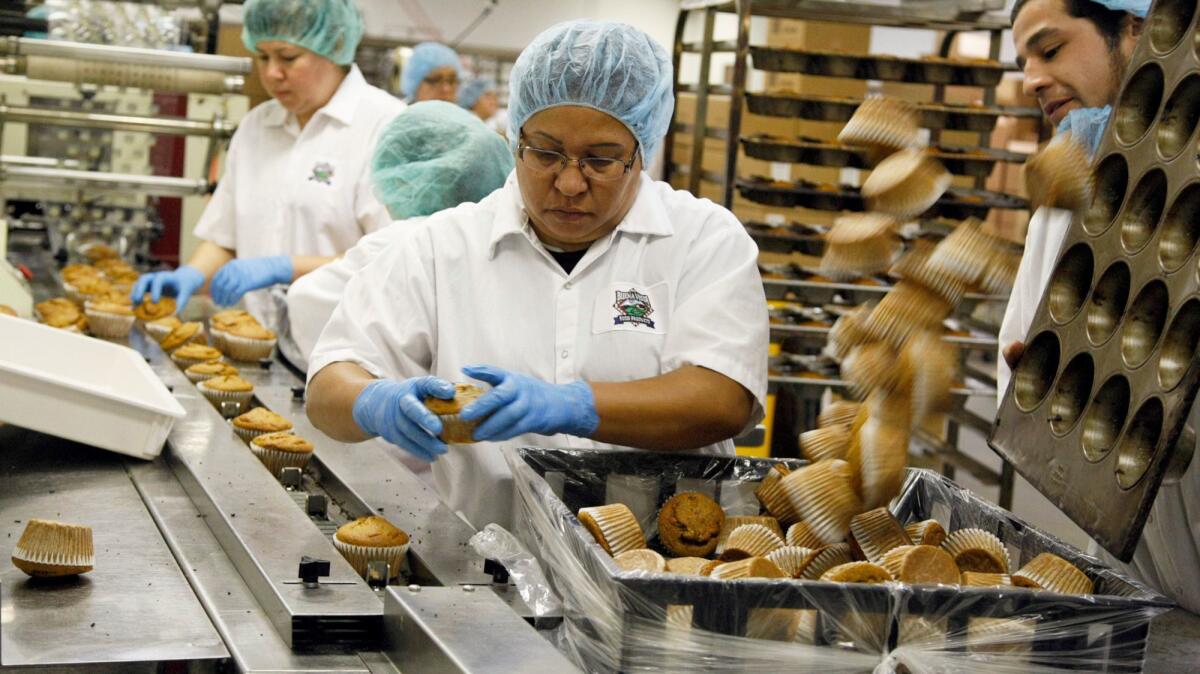
Is L.A. Unified likely to relax its own standards now that the Trump administration is doing so?
No.
Are the changes likely to affect local schools in some ways?
They could affect some schools and some school districts, but L.A. Unified, the state’s largest school system, will continue to use the nutritional targets set by the Obama administration.
Where does L.A. Unified stand on nutrition standards?
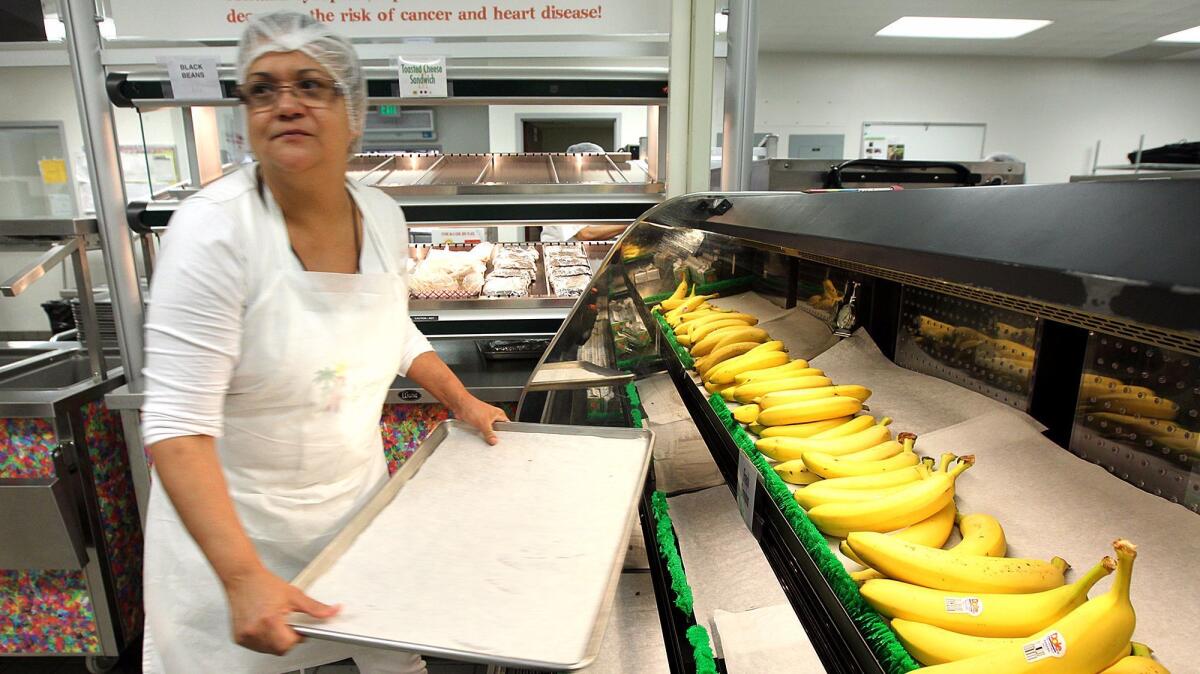
L.A. Unified has been a national leader in improving nutritional standards. But it has encountered some of the same problems that other school systems are complaining about, which include persuading students to eat healthier meals.
What are the arguments against the nutritional guidelines established by the Obama administration?
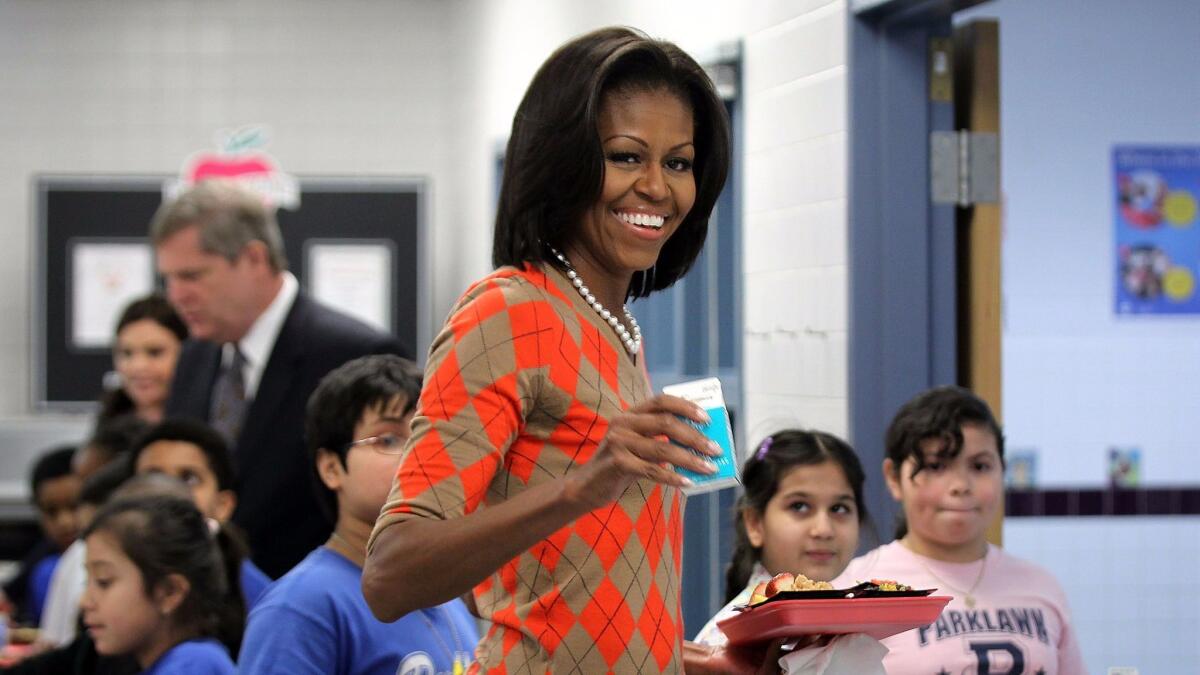
School districts and some related organizations have complained that the rules need to strike a better balance between nutrition and taste appeal, because it’s better for students to eat school food rather than to skip these meals or substitute something unhealthful instead — before or after school.
School systems also have borne some costs associated with higher standards without getting enough federal aid to cover these costs. One example is that the Obama-era rules upped the fruit content at breakfast from half a cup to a full cup, but did not provide extra funding for the extra fruit, said Joseph Vaughn, director of food services for L.A. Unified.
Is this another “extreme” right-wing move by the Trump administration?
Not exactly. There are certainly many school districts that are likely to support these changes. And, yes, they move away from healthier alternatives, but not all the way to the extreme of unhealthful alternatives.
The administration did not, for example, backtrack all the way to 2% milk or to the elimination of all sodium standards.
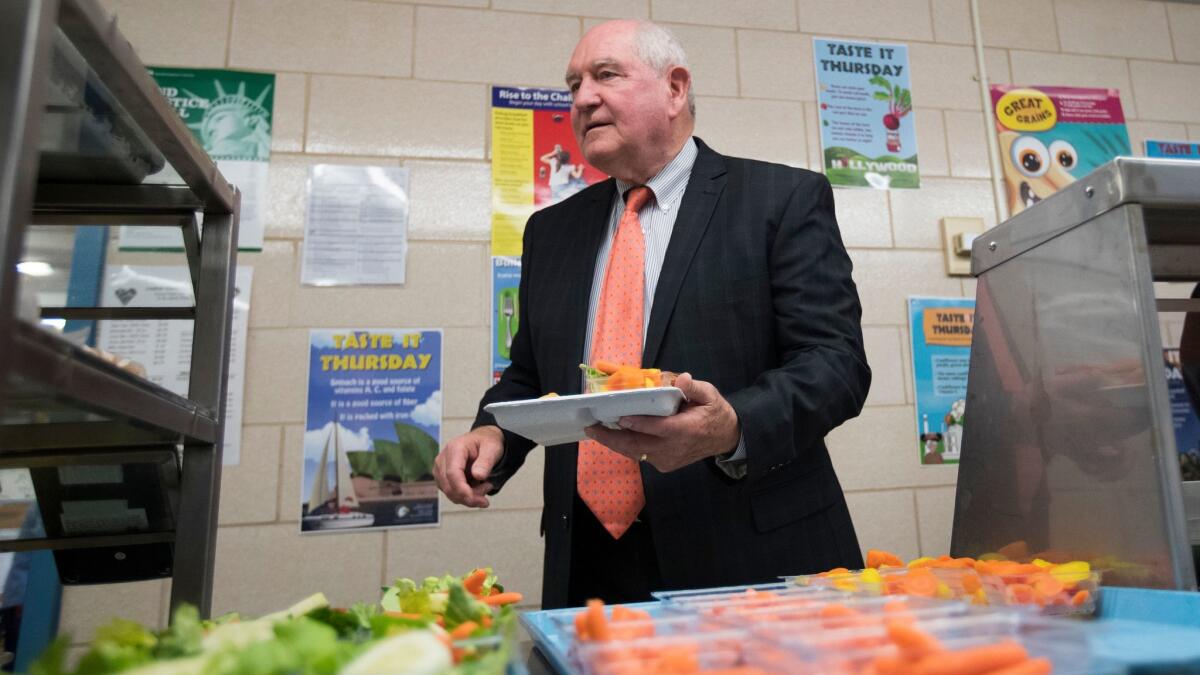
How does the Trump administration argue the need for these changes?
Here’s the anecdote offered by Perdue: “A perfect example is in the South, where the schools want to serve grits. But the whole-grain variety has little black flakes in it, and the kids won’t eat it. The school is compliant with the whole-grain requirements, but no one is eating the grits. That doesn’t make any sense.”
Food advocacy groups challenge such anecdotes. They contend that school systems were largely on track to meet the new guidelines and that such problems as childhood obesity justify strong nutritional standards.
In any case, there was more than a little hyperbole in the headline of the federal announcement: “Ag Secretary Perdue Moves to Make School Meals Great Again.”
Do the new federal regulations affect L.A. Unified policies on milk, which has been the subject of much recent discussion in the district?

As it happens, L.A. Unified this week began general distribution of flavored milk for the first time since 2011, when it was banned by then-Supt. John Deasy and the Board of Education. But the timing of this move is coincidental to the federal announcement. L.A. Unified is now serving nonfat flavored milk, which was always allowed. It is not considering flavored milk with 1% fat, even though that is now permitted.
What else is happening on the food front in L.A. Unified?
The school system next fall will test having a vegan option at a group of schools. And the district’s chicken is sourced from providers who are scored based on how they treat their chickens, their employees and the environment.

Do students like the healthy food at L.A. Unified?
Meal consumption is up, and one reason may be that the district has made some concessions to taste that, in some cases, have a nutritional impact. Kids like breaded chicken more than grilled chicken, for example, so the district will offer more of that. But there’s still an issue with the preparation of food in central kitchens. The food doesn’t always travel well, especially when it comes to preserving flavor. L.A. Unified also is behind some school systems in providing choices such as salad bars. The district has no plans in the near future to return to the era of cafeterias where the lunch ladies (and men) actually prepare the food at schools.
To read the article in Spanish, click here
Twitter: @howardblume
More to Read
Sign up for Essential California
The most important California stories and recommendations in your inbox every morning.
You may occasionally receive promotional content from the Los Angeles Times.











